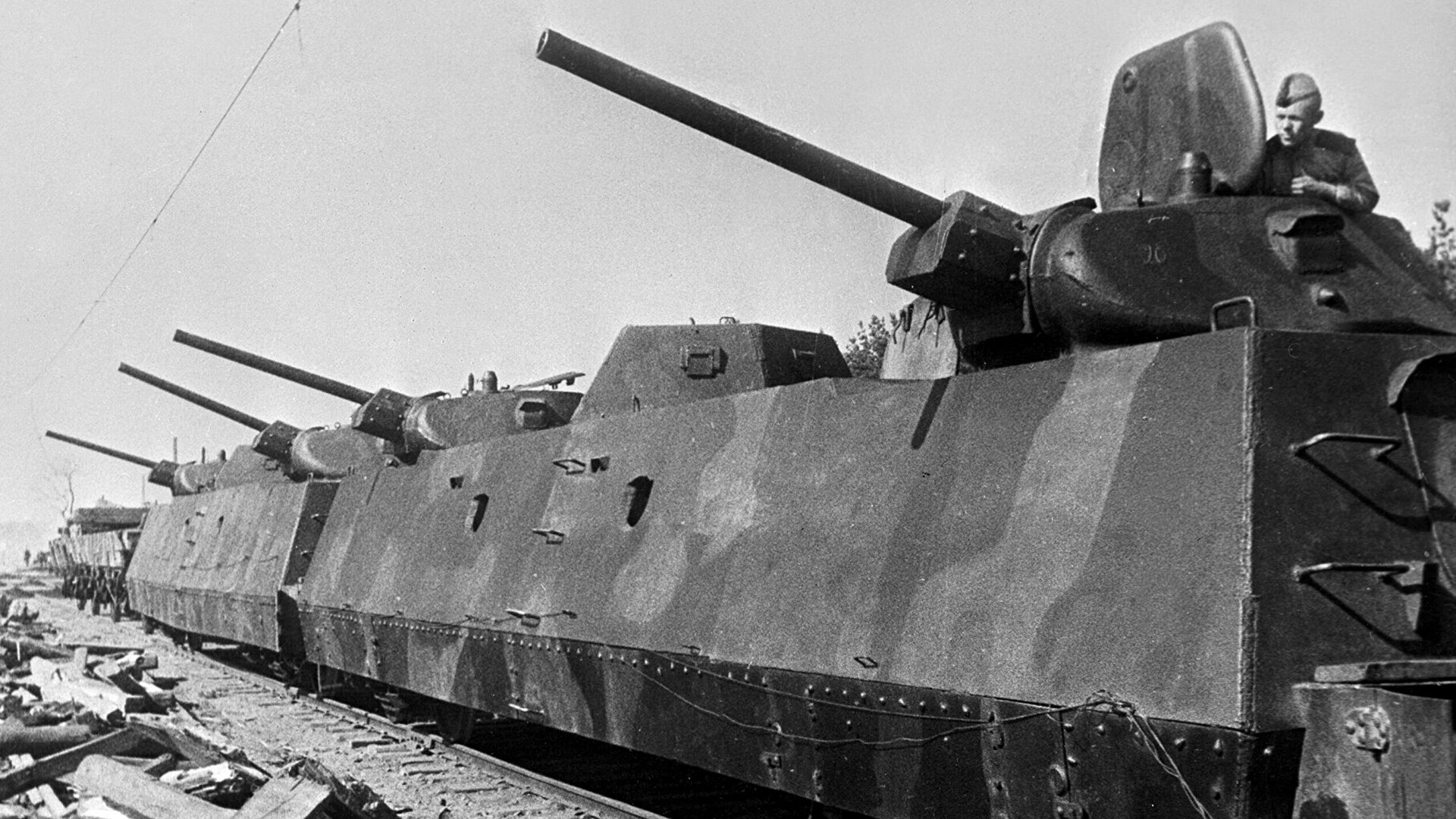
Many countries involved in World War II used armored trains in combat operations, but the USSR was the undisputed leader among them. At the time of the Wehrmacht invasion on June 22, 1941, the Red Army and NKVD Troops (which protected the state border and the rear) had over sixty “fortresses on wheels”, which operated both independently and as part of separate units of two or three trains each.
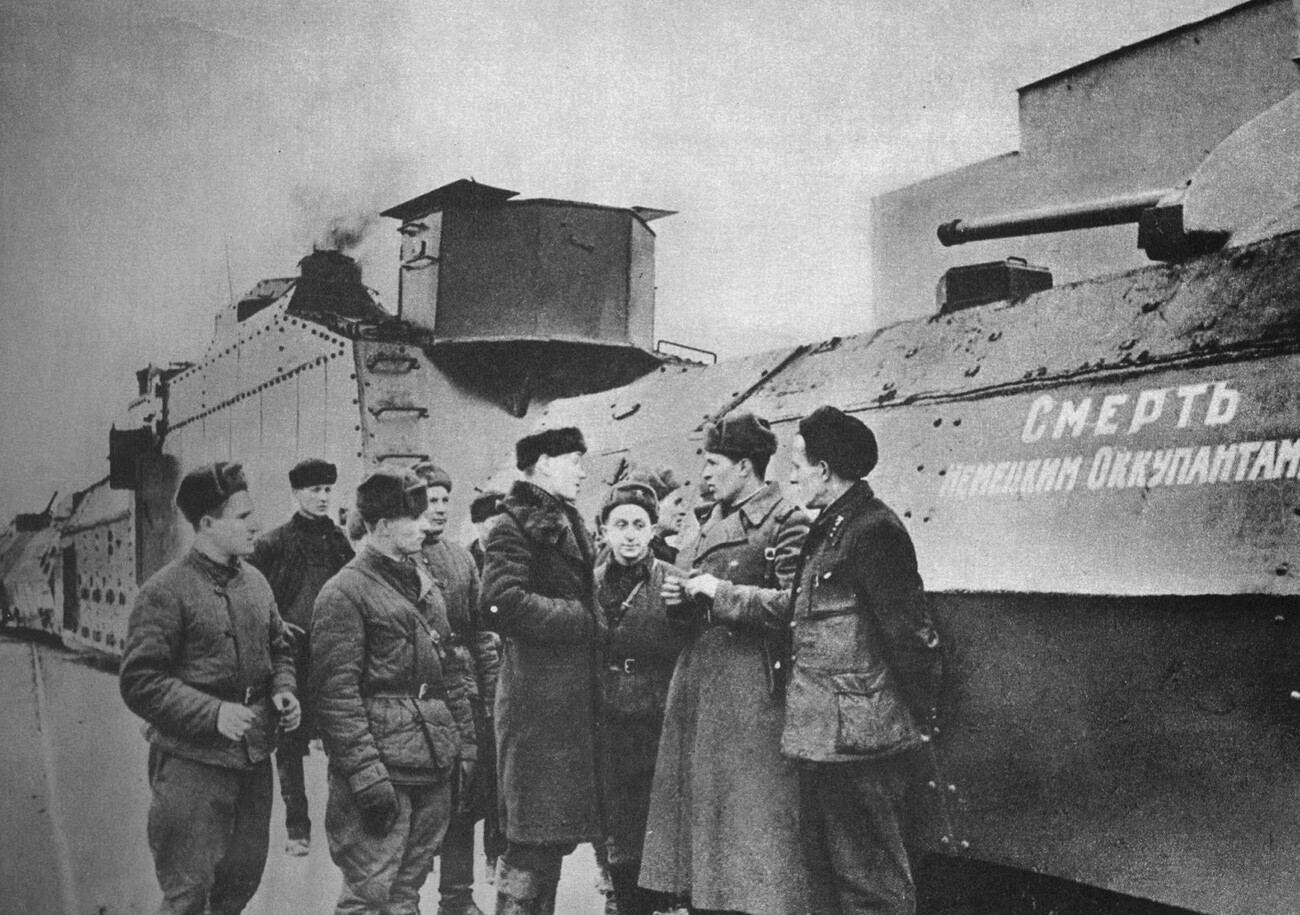
In addition to their armored locomotives, armored trains could include enclosed armored railway trucks with two T-34 tank turrets each, as well as open and enclosed trucks fitted with artillery pieces and machine guns. For example, the ‘Stalinets-28’ heavy armored train which defended Leningrad was fitted with four 100-mm guns, four 120-mm mortars, two 76-mm anti-aircraft guns and 24 mounted ‘Maxim’ machine guns.
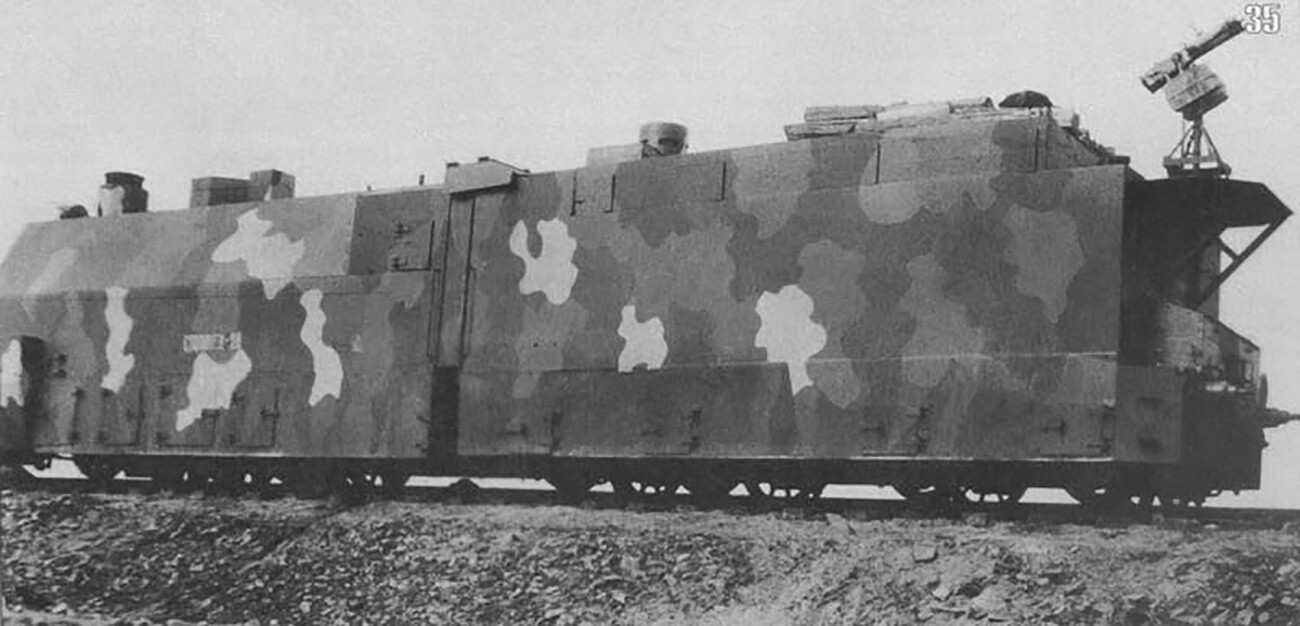
In addition to the trucks carrying weapons, the trains had several carriages housing a command post, depots for ammunition, equipment and supplies, a workshop, a kitchen and so on. Before the beginning of combat operations, these were usually uncoupled and pulled to the nearest stretch of railway line in the rear.
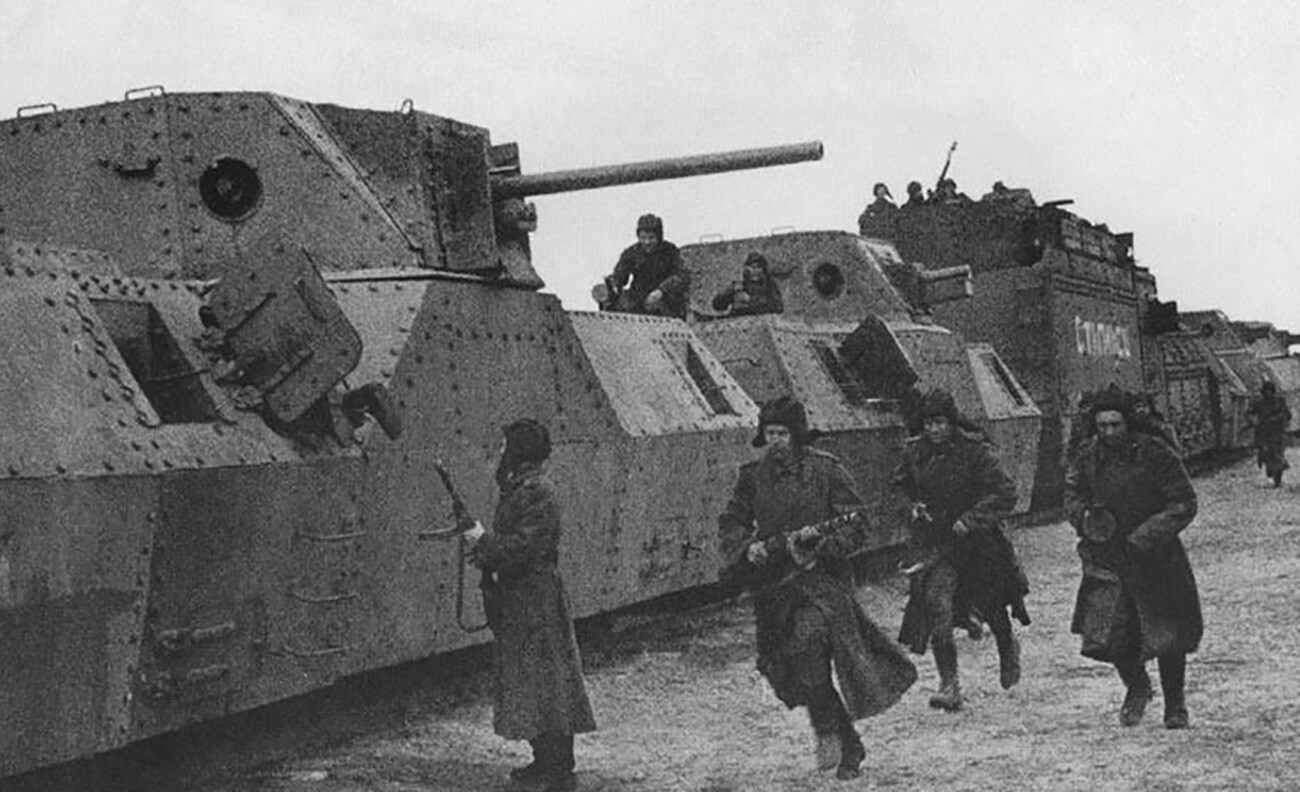
During the war, armored trains were supposed to provide fire support to troops, escort the most important troop trains and defend key railway stations and junctions, as well as combating enemy assault forces. Notwithstanding their powerful armaments, the “fortresses on wheels” had relatively weak armor and were highly vulnerable to enemy artillery and armored vehicles and also - in the absence of adequate anti-aircraft weapons - to aviation.
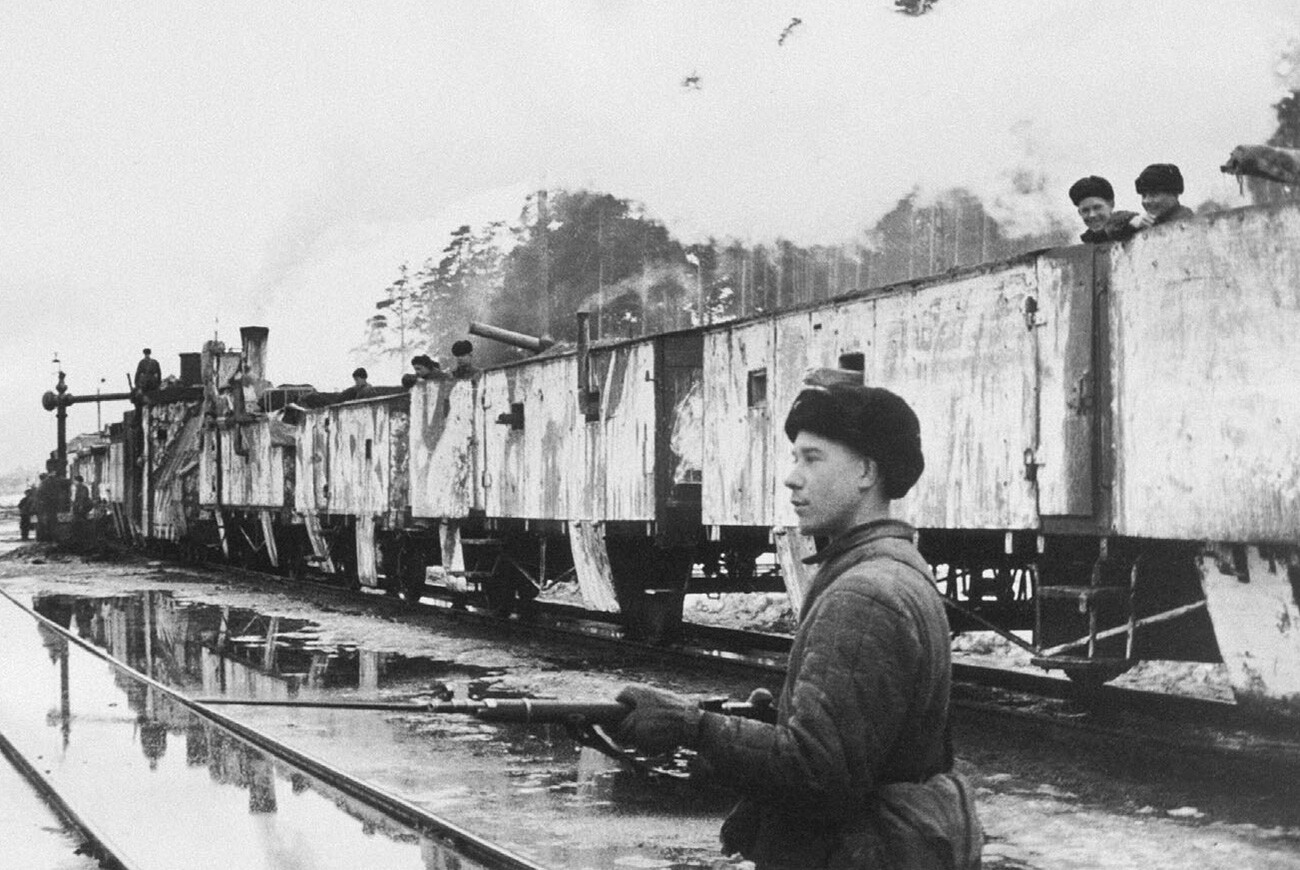
The outbreak of war came as a real nightmare for Soviet armored trains, which frequently had to cover the withdrawal of Red Army units single-handedly. If the enemy managed to sever the railway line, the armored train was doomed: It was either destroyed or blown up by its own crew to prevent it from falling into enemy hands. The Nazis commonly used seized armored trains in their anti-partisan drives.
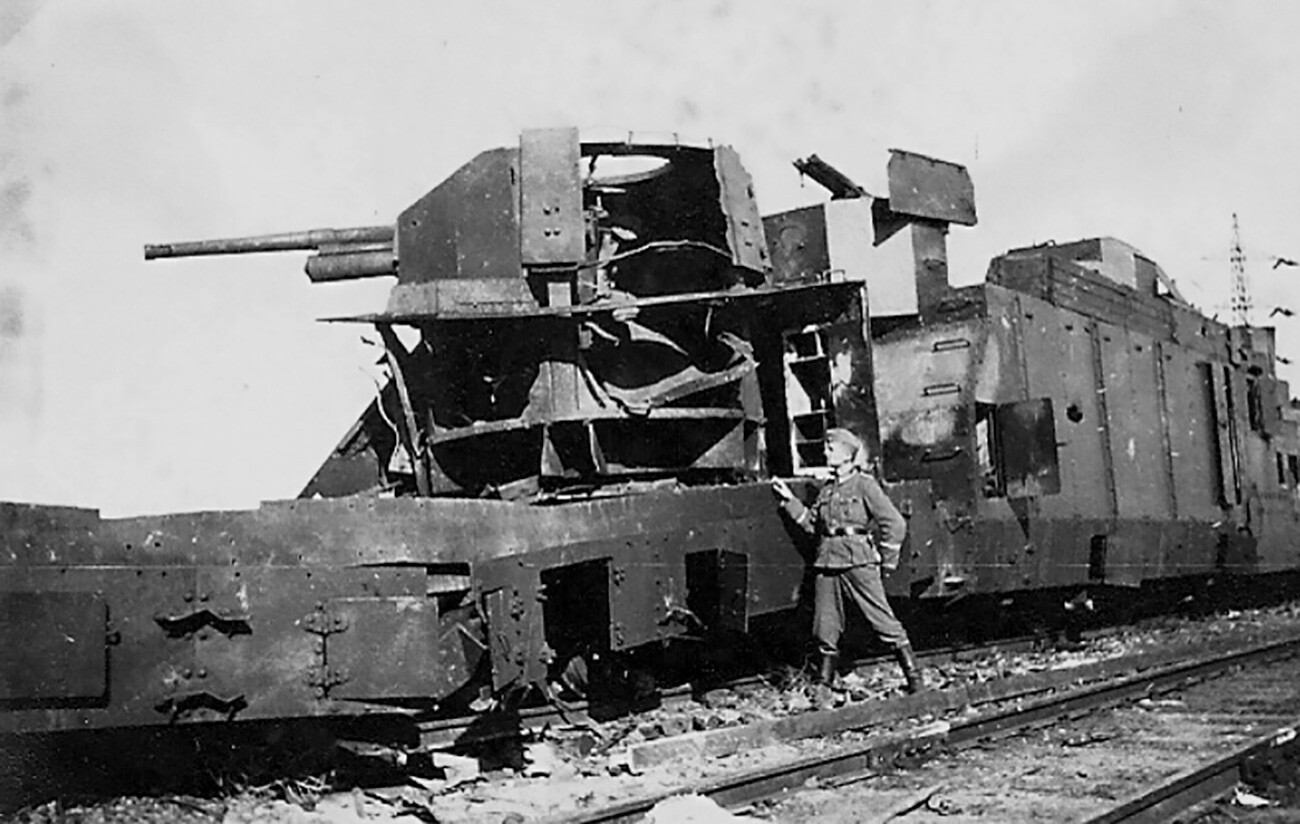
In the years 1941 and 1942, the USSR lost 63 armored trains, but the construction of new “fortresses” had been proceeding at full tilt from the first days of the war. They were far from always made to a uniform specification - whatever came to hand was often used in their manufacture, even including obsolete weapons from museums.
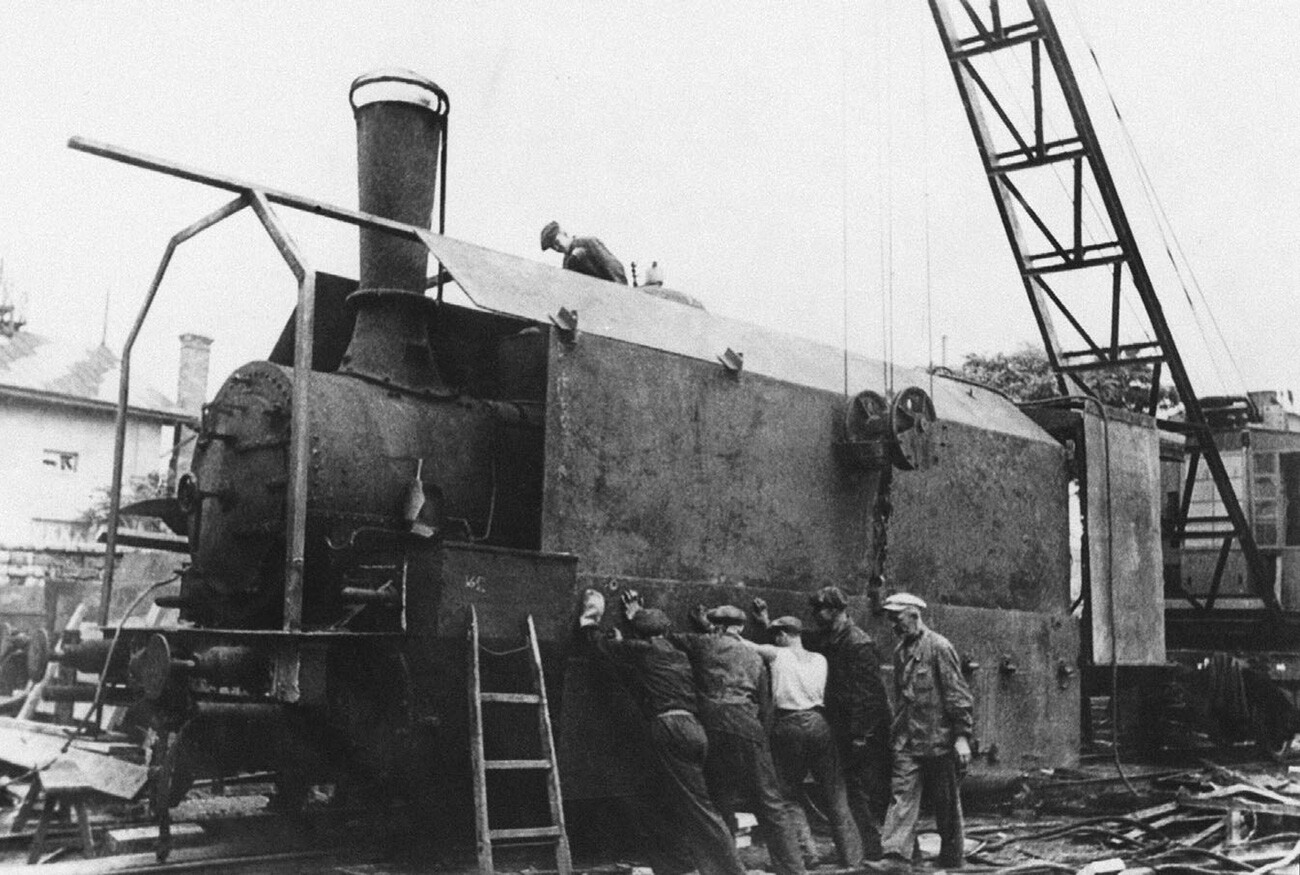
The highly effective use to which armored trains could be put was demonstrated in the course of the defense of cities such as Tallinn and Leningrad. Sevastopol was defended for eight months by the ‘Zheleznyakov’ armored train, which the Germans dubbed the ‘Green Ghost’. After carrying out its rapid sorties, it hid in an underground tunnel impenetrable to bombs and shells. On June 26, 1942, however, the roof of the tunnel failed to withstand an intensive air raid and the ‘Zheleznyakov’ was buried inside it along with its crew.
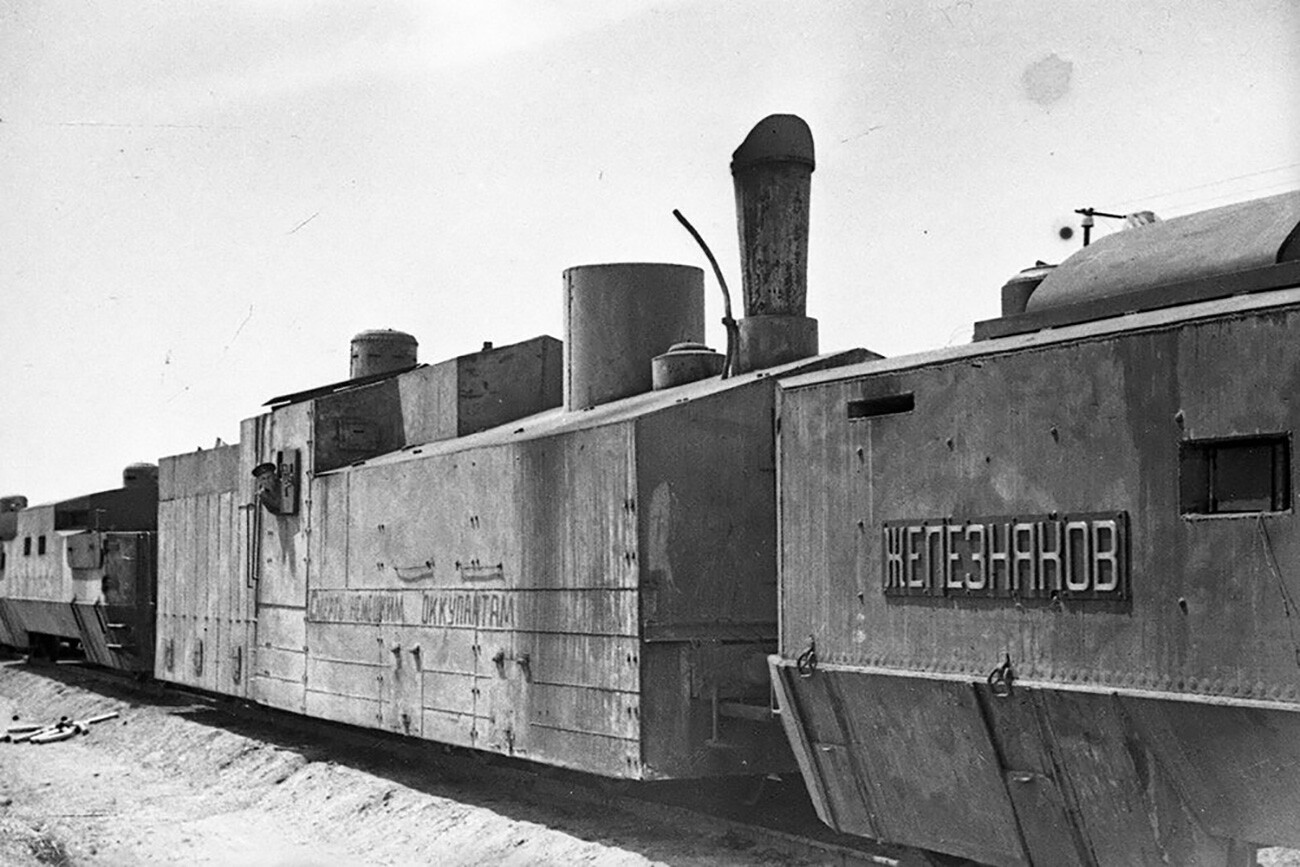
The outcomes of the battles of Stalingrad and Kursk marked a tipping point in the war and the Red Army swept westwards. The situation with armored trains also changed. From desperate “suicide trains” they were transformed into a solid back-up for the advancing troops. During 1943, just two trains were lost and, in 1944 and 1945, there were no losses at all.
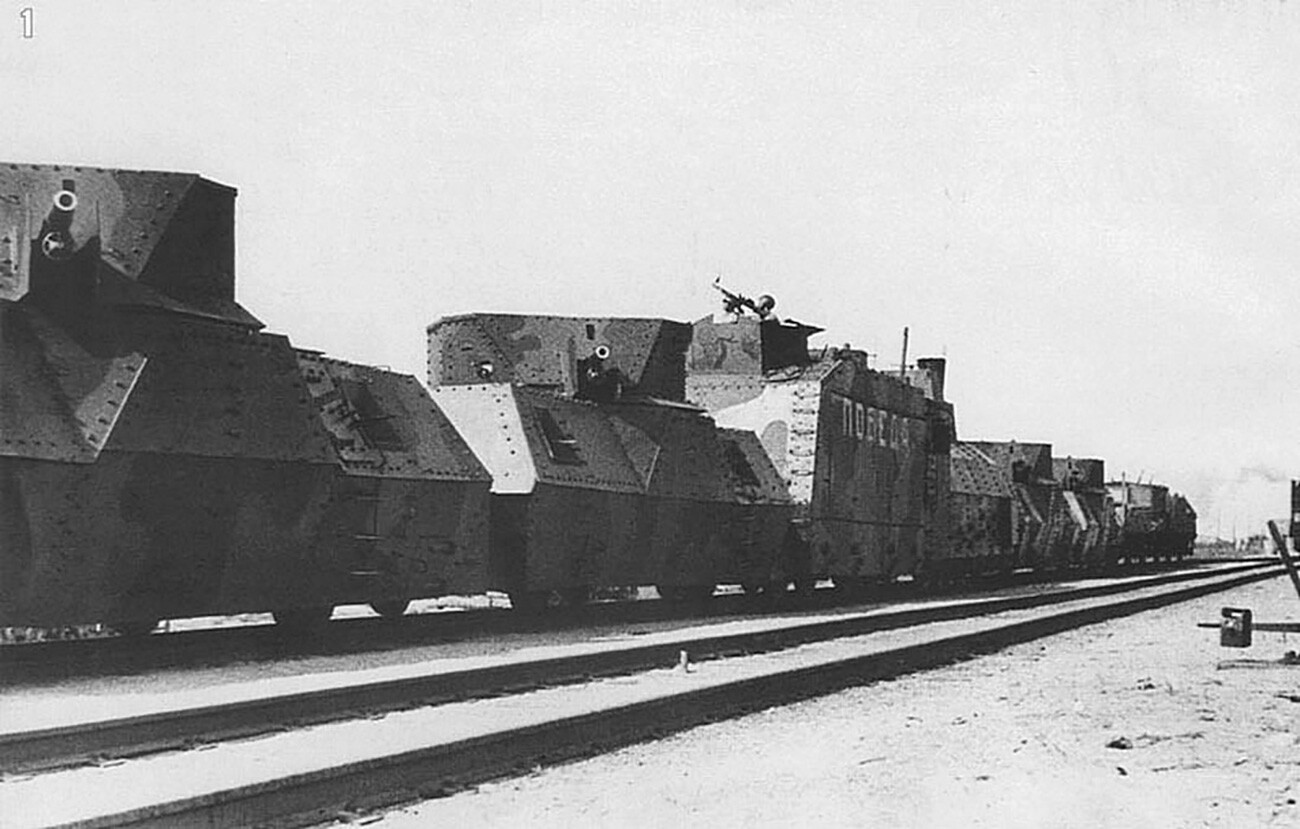
Following the liberation of Soviet territory, the armored trains also took part in the battles in Europe, easily switching to the local rail gauge. Specialized armored air defense trains fitted with rapid-fire 25-mm and 37-mm anti-aircraft cannon, as well as 12.7-mm DShK anti-aircraft machine-guns, gave an excellent account of themselves. Swiftly traveling great distances, they provided effective cover for advancing troops against threats from the sky, while the anti-aircraft artillery regiments were still on their way.
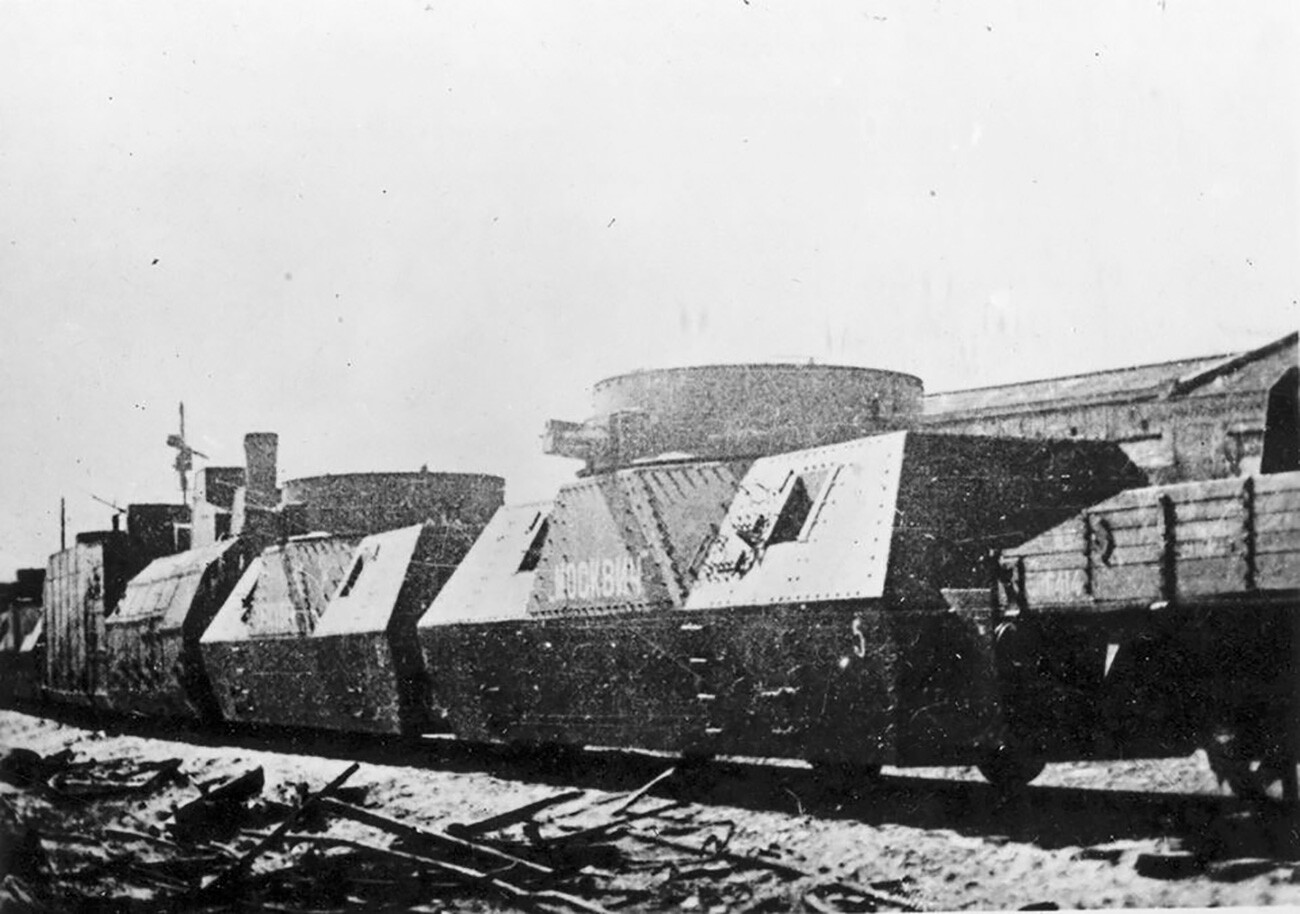
Two of the mightiest Soviet armored trains - the ‘Kozma Minin’ and ‘Ilya Muromets’ (with up to 45 mm of armor) even managed to reach the outskirts of Berlin. Even before that, however, the ‘Ilya Muromets’ took part in a unique armored train duel. On June 4, 1944, near the town of Kovel, it destroyed its German opposite number, which, in the Soviet Union, was erroneously named the ‘Adolf Hitler’. In actual fact, the Third Reich’s Panzerzüge did not have names.
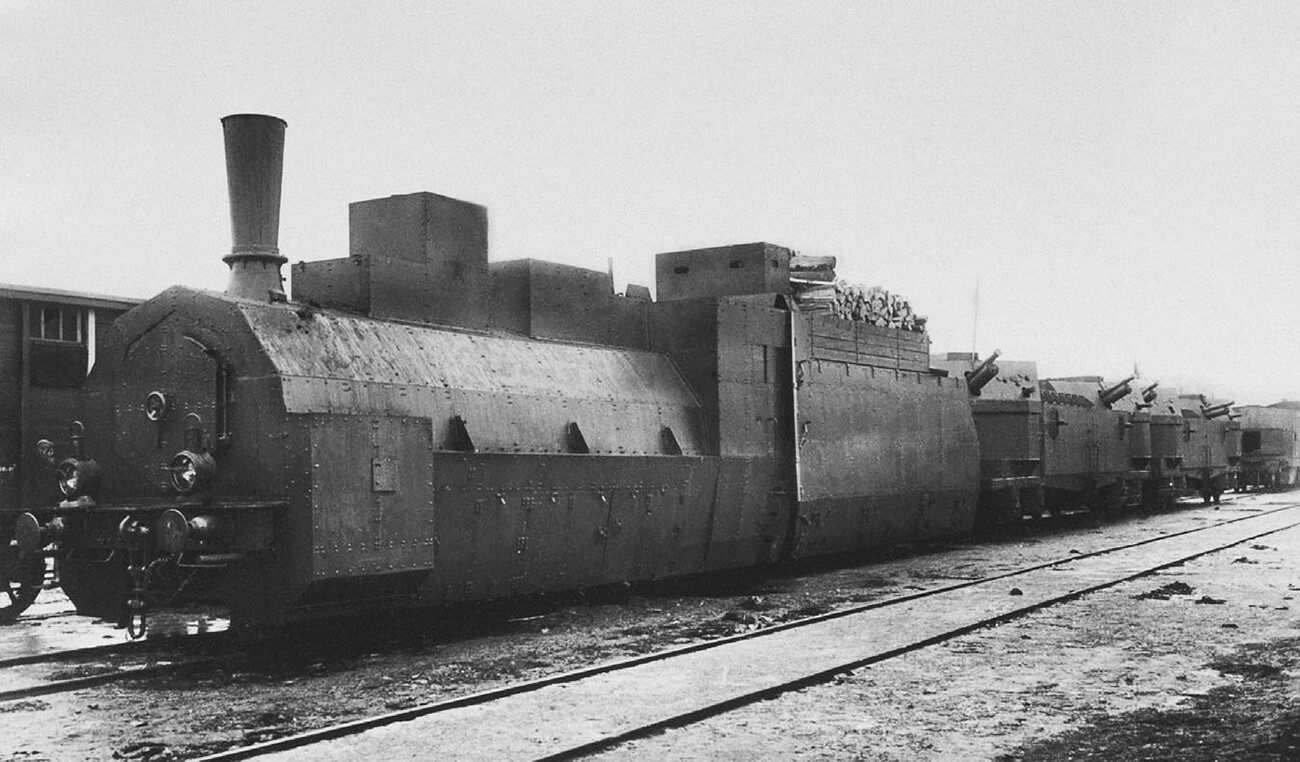
Throughout the period of the war, Soviet armored trains managed to destroy, inter alia, 370 enemy tanks, 712 vehicles and 344 artillery pieces and mortars, as well as shooting down 115 German aircraft. Two Red Army armored trains and three belonging to the NKVD Troops were awarded the Order of the Red Banner, while 10 separate armored train units were given honorific names. Government awards were conferred on one in four crew members of the “fortresses on wheels”.
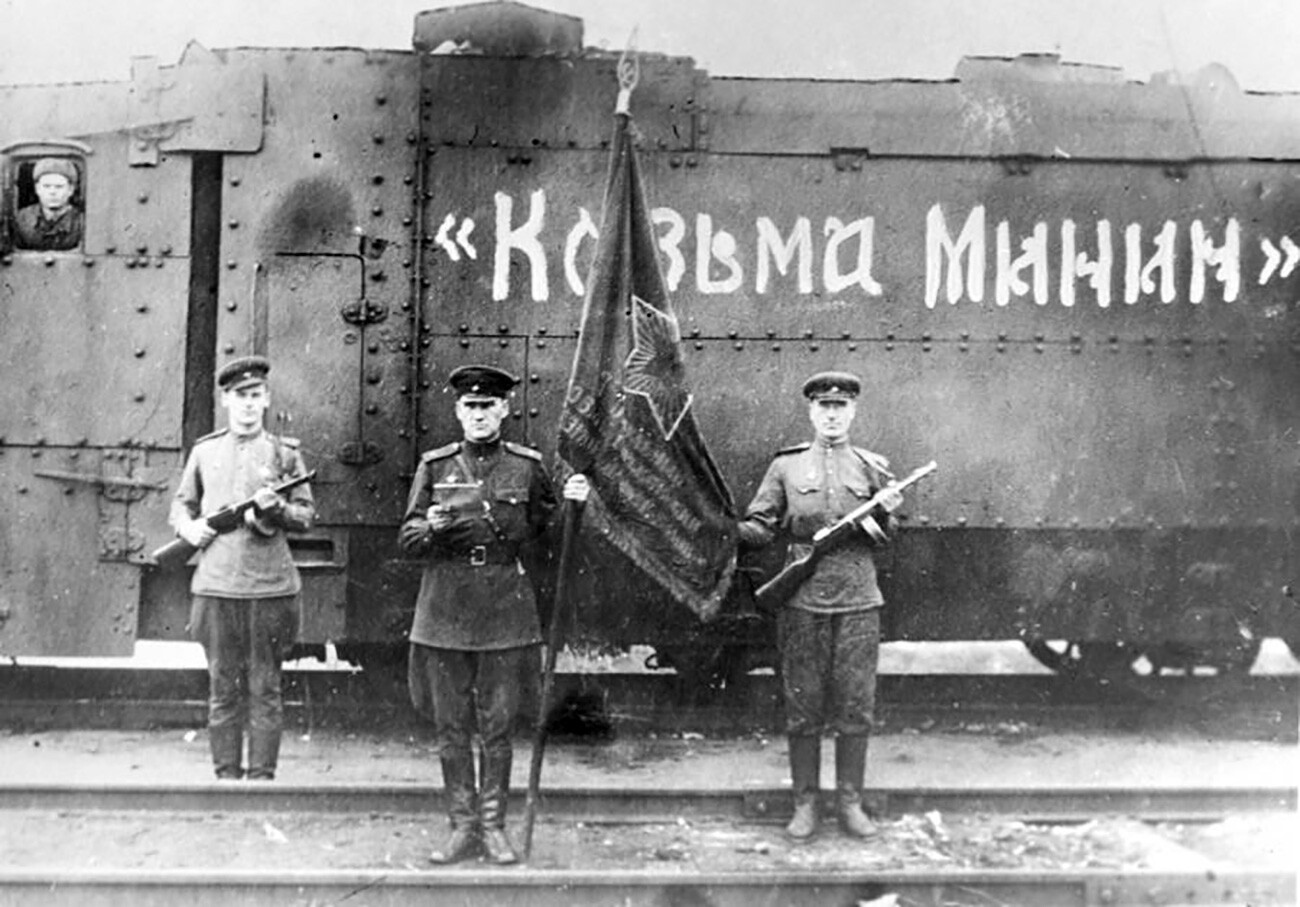
If using any of Russia Beyond's content, partly or in full, always provide an active hyperlink to the original material.
Subscribe
to our newsletter!
Get the week's best stories straight to your inbox